Western Cape Water Supply System
The Western Cape Water Supply System (WCWSS) is a complex water supply system in the Western Cape region of South Africa, comprising an inter-linked system of six main dams, pipelines, tunnels and distribution networks, and a number of minor dams, some owned and operated by the Department of Water and Sanitation and some by the City of Cape Town.[1]
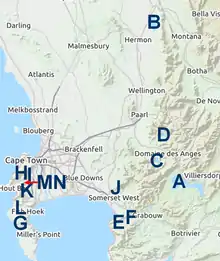
Components
The largest component of the WCWSS is the Riviersonderend-Berg River Government Water Scheme, which is a large inter-basin water transfer scheme that regulates the flow of the Sonderend River flowing South towards the Indian Ocean, the Berg River flowing North towards the Atlantic Ocean and Eerste River that flows into False Bay.
The principal dams are all located in the Cape Fold Mountains to the east of Cape Town. They are:
- Theewaterskloof Dam
- Wemmershoek Dam
- Steenbras Dams (Upper and lower)
- Voëlvlei Dam
- Berg River Dam
These six major dams provide 99.6% of the combined storage capacity, and 8 minor dams the remaining 0.4%. The levels of these dams are recorded and published in weekly reports by the Department of Water and Sanitation.[2][3][4]
The largest dam in the system is the Theewaterskloof Dam on the Sonderend River, with a storage capacity of 480 million cubic meters, or 41% of the total storage. It is linked to the Cape Town water system through the Faure treatment works via the Kleinplass balancing dam with a tunnel system through the Hottentots Holland Mountains. The Berg River dam (130 million cubic meter) was added to this system in 2009.
Other storage dams of the WCWSS are the Voëlvlei Dam (159 million cubic meters), the Wemmershoek Dam (59 million cubic meter) in the Berg River basin, the Upper and Lower Steenbras Dams on the Steenbras River as well as the Palmiet Pumped Storage Scheme dams on the Palmiet River, from which water can be transferred to the Steenbras dams.[5]
In 2009 storage capacity in the system was increased by 17% from 768 to 898 million cubic metres through the completion of the Berg River Dam.[6]
| Major Dams | Capacity
(cubic metres) |
Location | Minor Dams | Capacity (cubic
metres) |
Location | ||
|---|---|---|---|---|---|---|---|
| A | Theewaterskloof (Villiersdorp) | 480188 |  |
G | Kleinplaats (Simon's Town) | 1368 |  |
| B | Voëlvlei (Gouda) | 164095 |  |
H | Woodhead (Table Mountain) | 954 | 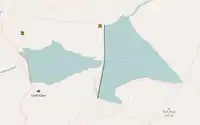 |
| C | Berg River (Franschhoek) | 130010 | 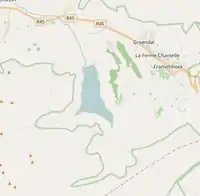 |
I | Hely-Hutchinson (Table Mountain) | 925 |  |
| D | Wemmershoek (Franschhoek) | 58644 |  |
J | Land-en-Zeezicht (Helderberg) | 451 | 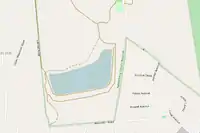 |
| E | Steenbras Lower (Grabouw) | 33 517 | 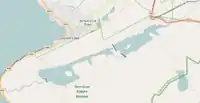 |
K | De Villiers (Table Mountain) | 243 | 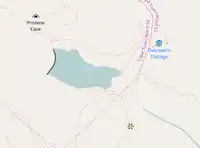 |
| F | Steenbras Upper (Grabouw) | 31767 | L | Lewis Gay (Simon's Town) | 182 |  | |
| M | Victoria (Table Mountain) | 128 | 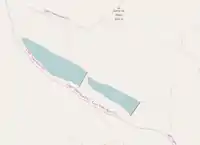 | ||||
| N | Alexandra (Table Mountain) | 126 |
Water use
In 2009, 63% of the water in the system was being used for domestic and industrial purposes in the city of Cape Town, which has a population of over 4 million. Smaller towns used 5%, and 32% was used by agriculture.[5] Within the city, in 2016/2017, 64.5% of water went to houses, flats and complexes, while 3.6% went to informal settlements.[7]
The system provides water to irrigate about 15,000ha of farmland, where high-value fruit and vegetables are grown. From the early 1970s until the mid-2000s water consumption in Cape Town increased by about 300%, increasing the competition for water with irrigated agriculture. This has been exacerbated by several unusually dry years, such as in 1994-1995 when storage in the system was only one third of average storage. Farmers have adapted by significantly improving irrigation efficiency and shifting even more land into the production of high-value crops.[8]
The system also generates pumped storage hydropower using an installed capacity of 400 Megawatt (MW) on the Palmiet River and 180MW on the Steenbras River.
Water crisis 2015-present
Beginning in 2015, a drought resulted in a severe water shortage in the area, with dam levels declining to critically low levels, and Cape Town announcing plans for "Day Zero", when municipal water supply would have to be shut off.[9] Water conservation and demand management was implemented, with increasingly severe water restrictions to both agriculture and urban use. Emergency augmentation measures including groundwater extraction from aquifers and desalination projects are underway.[10] Through water saving and augmentation measures, by March 2018 the City had reduced its daily water consumption by more than half to around 500 million litres per day, resulting in the initial prediction of Day Zero in April 2018 being pushed back to 2019. The situation, however, remains severe, particularly if the run of record dry winters continues in the near future.
See also
References
- Address by Mr Ronnie Kasrils, MP, minister of Water Affairs and Forestry, at the Berg Water Project signing ceremony on 15 April 2003, in Cape Town, accessed on 11 December 2009
- "This Week's Dam levels". www.capetown.gov.za. Retrieved 2017-06-16.
- "Western Cape Dam Levels". www.elsenburg.com. Retrieved 2017-06-16.
- "Department of Water and Sanitation - Surface Water Storage". niwis.dws.gov.za. Retrieved 2017-06-16.
- Department of Water Affairs and Forestry:Western Cape Water Reconciliation Strategy, Newsletter 5, March 2009, accessed on 11 December 2009
- City of Cape Town:Cape Town's water supply boosted, 17 March 2009, accessed on 12 December 2009
- Makou, Gopolang (21 August 2017). "Do Formal Residents Use 65% of Cape Town's Water?". Africa Check.
- John M. Callaway, Daniel B. Louw and Molly Hellmuth:Benefits and Costs of Measures for Coping with Water and Climate Change:Berg River Basin, South Africa, in: Fulco Ludwig, Pavel Kabat, Henk van Schaik and Michael van der Valk: Climate change adaptation in the water sector, London 2009, p. 205-226
- Brandt, Kevin (23 January 2018). "Day Zero Brought Forward, CT Officials Prepare for Worst".
- Pitt, Christina (19 January 2018). "Cape Town water crisis: WWF helps you understand the basics".